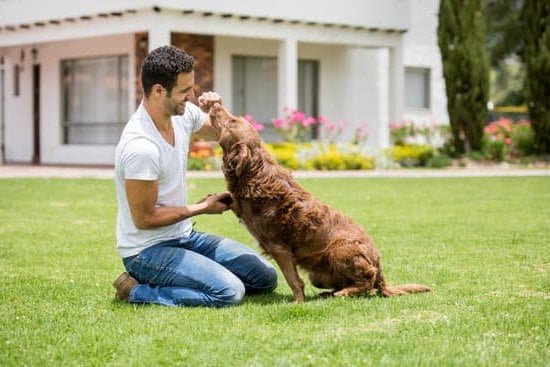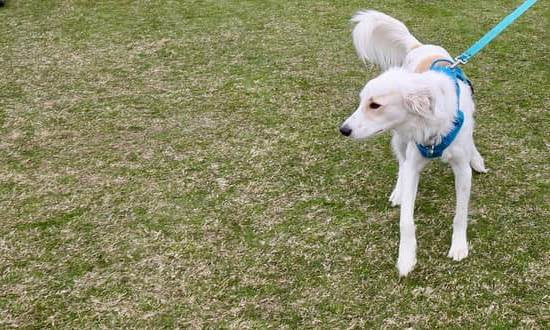Are you wondering how to use a whistle to train your dog? Whistles are a valuable tool for teaching and controlling your furry friend, offering benefits that traditional verbal commands may not always achieve. From improving communication to fostering a deeper connection with your pet, the whistle can be an effective aid in obedience training and behavioral development.
When it comes to understanding the whistle as a training tool, it’s essential to recognize its significance in the world of dog training. The distinctive sound of a whistle can be heard clearly from afar, providing a consistent and reliable means of communication with your dog. Scientifically, dogs respond well to whistle commands due to their ability to distinguish high-frequency sounds more easily than human voices.
To get started, it’s important to choose the right type of whistle for training your dog. With various options available, such as pealess whistles or silent whistles, each has its own benefits and ideal uses depending on your dog’s breed and temperament. Building from this foundation, introducing the whistle to your dog involves creating a positive association with the sound before utilizing it as part of basic command training.
In this section, we will explore why the whistle is an effective training tool for dogs and how you can introduce this method into your pup’s routine. By harnessing the power of the whistle alongside positive reinforcement methods, you’ll find yourself on track toward building a closer bond with your four-legged companion.
Choosing the Right Whistle for Training Your Dog
The pealess whistle produces a high-pitched sound that is easily heard by dogs and can be used to grab their attention effectively, making it suitable for basic obedience commands and recall training. On the other hand, the silent whistle emits a sound that is not audible to humans, offering a more discreet option for training and greater control over the frequency and pitch of the sound.
When selecting a whistle for your dog’s breed and temperament, consider factors such as your dog’s hearing sensitivity, age, and whether they have any noise aversions. For instance, breeds with sensitive hearing may require a quieter or silent type of whistle to prevent discomfort or agitation. Additionally, puppies may benefit from adjustable frequency whistles as their hearing continues to develop.
Ultimately, it’s essential to choose a whistle that both you and your dog feel comfortable with while considering their individual needs and preferences. This will help create a positive experience around the use of the whistle during training sessions, enhancing overall effectiveness.
| Whistle Type | Benefits |
|---|---|
| Pealess Whistle | Easily heard by dogs, effective for grabbing attention |
| Silent Whistle | Sound not audible to humans, discreet training option |
Introducing the Whistle to Your Dog
When it comes to dog training, introducing a whistle can be a highly effective tool for communication and reinforcement. The whistle’s sound is consistent and can travel long distances, making it ideal for recall and other commands. Understanding how to introduce the whistle to your dog is the first step in using it as an effective training tool.
To successfully introduce the whistle to your dog, it’s important to build a positive association with the sound. This can be achieved by pairing the whistle with something your dog loves, such as treats or playtime. Here are some steps for introducing the sound of the whistle to your dog:
- Start in a quiet environment: Begin by introducing the whistle in a calm and familiar setting where there are minimal distractions.
- Pair the whistle with positive experiences: Every time you use the whistle, immediately follow it with a treat, praise, or a favorite toy. This will create a positive association with the sound.
- Keep sessions short and enjoyable: Training sessions should be kept short and fun to prevent overwhelming your dog. Gradually increase the duration as your dog becomes more comfortable with the sound of the whistle.
By following these steps, you can help your dog associate the sound of the whistle with positive experiences, setting the stage for successful training sessions in the future. Remember that patience and consistency are key when introducing any new training tool to your canine companion.
Teaching Basic Commands With the Whistle
Teaching your dog basic commands with the whistle can be a highly effective way to communicate and train your furry friend. By using the whistle for recall, sit, stay, and down commands, you can foster a deeper level of understanding and responsiveness in your dog. Here are some key points to consider when incorporating the whistle into your dog’s training routine:
- Using the whistle for recall: One of the most important commands you can teach your dog is a reliable recall. The high-pitched sound of the whistle can cut through distractions and distance, making it an ideal tool for reinforcing this crucial command.
Start by associating the sound of the whistle with a positive experience for your dog, such as receiving a treat or engaging in playtime. Then, gradually introduce the recall command along with the whistle, rewarding your dog each time they respond correctly. - Using the whistle for sit, stay, and down commands: The whistle can also be used to reinforce other fundamental commands such as sit, stay, and down. When teaching these commands with the whistle, consistency is key. Pairing the appropriate whistle pattern or blow with each specific command will help your dog understand what is expected of them.
For example, one short burst on the whistle could mean “sit,” while two quick bursts could mean “down.” With patience and practice, your dog will learn to associate these different signals with their corresponding actions.
– Repetition and positive reinforcement are essential when using the whistle to teach basic commands to your dog. Remember to keep training sessions short and enjoyable for both you and your furry companion. And always use rewards such as treats or praise to encourage desired behavior in response to the whistle commands.
By introducing basic commands with the use of a whistle in a consistent and positive manner, you can build a strong foundation for more advanced training techniques as well as improve communication between you and your canine companion.
Advanced Whistle Training Techniques
Training Your Dog to Respond to Different Whistle Patterns
Once your dog has mastered the basic commands with the whistle, you can start incorporating more advanced techniques. This can include using different whistle patterns or sequences to signal different behaviors or actions.
For example, one long, sustained blast could indicate that it’s time to come back to you, while a series of short, quick blasts could signify that it’s time for a specific trick or agility move. Consistency and repetition are key when introducing these new patterns, so be patient and give your dog plenty of positive reinforcement as they learn to recognize and respond to each unique pattern.
Incorporating the Whistle Into Agility and Trick Training
Whistle training can add a whole new level of complexity and challenge to your dog’s agility and trick training. Once your dog is familiar with responding to the whistle for basic commands, you can start integrating it into more advanced activities.
For example, using specific whistle patterns to cue your dog through an agility course or incorporating the sound of the whistle into teaching them new tricks. This not only adds an extra layer of mental stimulation for your dog but also strengthens their bond with you as their trainer.
Troubleshooting Common Issues With Whistle Training
As you progress with advanced whistle training techniques, it’s important to keep an eye out for any resistance or confusion that may arise in your dog. If you notice that they are struggling to respond to a certain whistle pattern or seem hesitant about it, take a step back and reinforce the basics before moving forward.
Additionally, if your dog becomes overwhelmed or stressed during advanced whistle training exercises, take a break and provide plenty of positive reinforcement and encouragement. With patience and persistence, you’ll be able to work through any challenges and continue advancing their skills with the whistle.
Troubleshooting Common Issues With Whistle Training
Whistle training can be an incredibly effective way to communicate commands and reinforce positive behaviors with your dog. However, like any training method, there may be some common issues that arise during the process. One of the most frequent problems encountered in whistle training is the dog’s resistance or confusion with the new form of communication.
One common issue when introducing a whistle to your dog is fear or aversion to the sound. Some dogs may be startled by the high-pitched noise, especially if it is introduced without proper acclimatization. This can lead to resistance and reluctance to follow commands. Another issue is confusion – your dog may not immediately understand what is expected of them when they hear the whistle, leading to frustration for both you and your pet.
To troubleshoot these problems, it’s essential to introduce the whistle gradually and create positive associations with its sound. This means pairing the sound of the whistle with rewards such as treats or praise whenever your dog responds correctly to a command. Additionally, using short training sessions and being patient will help alleviate any fear or confusion surrounding the whistle.
| Common Issues | Troubleshooting |
|---|---|
| Fear or aversion to sound | Introduce gradually & create positive associations |
| Confusion about commands | Pair sounds with rewards & be patient during training |
Incorporating Whistle Training Into Everyday Life
Using the Whistle for Off-Leash Walks and Outdoor Activities
Once your dog has become accustomed to responding to whistle commands, it can be incredibly useful for off-leash walks and outdoor activities. When in an open space where your dog can roam freely, the whistle provides a reliable way to communicate with your pet from a distance.
This is especially handy in areas where verbal commands may not carry as far or may get lost in the surrounding noise. The whistle can be used to call your dog back to you, signal a change of direction, or signify the end of playtime.
Integrating Whistle Commands Into Your Daily Routine With Your Dog
In addition to using the whistle during specific training sessions, try integrating it into your daily routine with your dog. For example, use the whistle command instead of a verbal one when calling your dog for mealtime or requesting that they wait before entering or exiting the house. Consistency is key in reinforcing their response to the whistle across different contexts, helping them understand that its signals are relevant and meaningful regardless of the situation.
Maintenance and Continued Success With Whistle Training
To maintain your dog’s response to the whistle over time, continue incorporating it into everyday life even after initial training is complete. Regular practice will help reinforce their understanding of its significance and keep their response sharp. Additionally, periodically revisit specific training exercises using the whistle to ensure that your dog remains responsive. Always remember to reward positive behavior when they correctly respond to the whistle, further solidifying their understanding and motivation to obey its commands.
Maintenance and Continued Success With Whistle Training
In conclusion, using a whistle as a training tool for your dog can be incredibly effective in establishing clear communication and strengthening the bond between you and your furry companion. By understanding the importance of the whistle and the science behind why dogs respond well to it, you can set the stage for successful training. Choosing the right whistle for your dog’s breed and temperament is crucial, as different types of whistles offer unique benefits.
Introducing the whistle to your dog in a positive way and gradually teaching them basic commands such as recall, sit, stay, and down will lay a solid foundation for more advanced whistle training techniques. It’s important to troubleshoot any issues that may arise during training by addressing resistance or confusion that your dog may have with the whistle.
Additionally, incorporating whistle commands into your daily routine with your dog can help reinforce their training and ensure continued success in the long run.
Lastly, maintaining your dog’s response to the whistle sharp through regular practice and reinforcement is key to their ongoing success with whistle training. By following these steps and tips, you can effectively integrate whistle training into everyday life, whether it be for off-leash walks or outdoor activities. With patience, consistency, and positive reinforcement, you can leverage the power of a whistle to transform your dog into a well-trained and obedient companion.
Frequently Asked Questions
Is a Whistle Good for Dog Training?
A whistle can be a useful tool for dog training, as it provides a clear and consistent sound that dogs can easily recognize. It can be especially helpful for long-distance commands or in situations where voice commands may not be heard over other noises.
However, it’s important to use the whistle properly and consistently to avoid confusing the dog.
What Are the Whistle Commands for a Dog?
The most common whistle command for a dog is a single short blast to get their attention or to signal them to come back to you. Some trainers also use different patterns of short and long blasts for specific commands such as sit, stay, or recall.
The key is to establish a clear association between the whistle command and the desired behavior during training.
How Do You Properly Use a Dog Whistle?
To properly use a dog whistle, start by finding the right frequency that your dog responds to best. Then, begin by teaching your dog to associate the sound of the whistle with a specific command using positive reinforcement such as treats or praise when they respond correctly.
Consistency is key – always use the same command with the same whistle pattern and maintain patience throughout the training process. It’s also important to never use excessive force or harsh sounds with the whistle, as it should be used as a tool for communication and not punishment.

Welcome to the blog! I am a professional dog trainer and have been working with dogs for many years. In this blog, I will be discussing various topics related to dog training, including tips, tricks, and advice. I hope you find this information helpful and informative. Thanks for reading!





